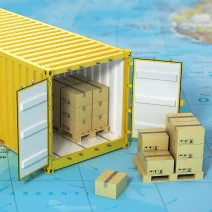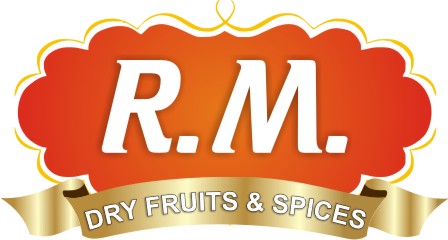The object part of PostgreSQL relates to the many extensions that enable it to include other data types such as JSON data objects, key/value stores, and XML. MongoDB is based on a distributed architecture that allows users to scale out across many instances, and is proven to power huge applications, whether measured by users or data sizes. The scale-out strategy relies on using a larger number of smaller and usually inexpensive machines. Now in the document database world of MongoDB, the structure of the data doesn’t have to be planned up front in the database and it is much easier to change. Developers can decide what’s needed in the application and change it in the database accordingly. If you are looking for a distributed database for modern transactional and analytical applications that are working with rapidly changing, multi-structured data, then MongoDB is the way to go.
MongoDB offers more flexibility and scalability, while PostgreSQL provides greater security and customization. However, there are many other databases available that may better suit your project’s requirements. MongoDB and PostgreSQL are popular data providers with a wide range of features that make them ideal for various applications. When considering which database technology is right for your business, it’s important to understand the major differences between them. PostgreSQL users have to be prepared for the difficulties of scalability when an application is launched. PostgreSQL utilizes a scale-up strategy, so at one time or another in high-performance use cases, it’s possible to hit a wall.
What Is PostgreSQL?
Finding the right database largely comes down to the needs of your system and organization. If scaling is a chief requirement, https://www.globalcloudteam.com/ then a database like MongoDB is a good option. If you need more consistent data, PostgreSQL will be worth considering.
It is not possible for transactions of the same unit to fail and not succeed at the same time, this is called partial failure which can be a complex problem if it ever happens. PostgreSQL is an RBDMS based on a client-server model, where clients connect to the PostgreSQL server to access the database. MongoDB provides advanced features like sharding, which allows you to add more servers to your MongoDB cluster and partition your data to each of these servers.
Query Processing
The other group performed a massive re-processing of our data lake and refactored the models and services to handle the new architecture. To be sure, we also tested the write and read response times for different formats and data structures; some were similar to the ones we were already using at the time. We recognized that in order to stay ahead in the fast-paced world of real-time machine learning (ML), we needed a data infrastructure that was flexible, scalable, and highly performant. We believed that ScyllaDB would provide us with the capabilities we lacked to support our real-time ML environment, enabling us to push our product and algorithms to the next level. The relational database has driven operations in Instagram, Foursquare, and Twitch. They use SQL (Structured Query Language) for querying and manipulation.
You can also choose to constantly store them in specific regions or global regions to ensure reduced latency. MongoDB is scalable because of partitioning data across instances within the cluster. It doesn’t split the documents into pieces as they are independent units making it easier to distribute them across various servers while data is locally preserved.
Important terms to know before making a database decision
MongoDB has a document model, making collaboration and development easier and faster to implement. MongoDB essentially uses JSON or BSON to store its data as documents. PostgreSQL stores the information about the columns, and tables, along with information regarding the data types, functions, and access methods present.

This makes it easy to customize PostgreSQL to meet the specific needs of a particular application. ACID compliance is most important in situations where transactions must be guaranteed to be executed in a consistent, isolated, and durable manner, such as in financial transactions. However, in MongoDB’s data model, transactions are typically less complex, and the need for strong ACID compliance may be less important. PostgreSQL provides a full guarantee for atomicity, consistency, isolation, and durability. PostgreSQL ensures atomicity by making sure each transaction fails or succeeds as a singular unit.
Download Our Guide to Open Source Databases
You can now model and sync your data with a Drag-and-Drop Editor (NoSQL, SQL, and Python built-in functions). RestApp is a No Code Data Activation Platform that empowers anyone with an all-in-one solution to connect, model, and sync any data with his favorite tools. The names of the keys that will be exported mongodb postgresql to CSV will be in the last attribute fields. The database is called purchasedb and the collection name is purchases. The next stage was to remove the proxy entirely and get clients to solely talk to the Postgres API. As there are numerous clients, updating each of them individually wasn’t really viable.

Instead, it has the concept of references, which allows a document to reference another document’s _id field. I have seen startups using many types of databases in their applications. Many prototypes and POCs are built using MongoDB as it is schema-free and provides a lot of flexibility.
PostgreSQL vs MySQL: Explore Their 12 Critical Differences
MongoDB uses MongoDB Query Language (MQL), while PostgreSQL uses SQL. Each one is very different in syntax and best suited for the structure in which their data is stored. MQL is great for query efficiency, performance, and scalability parsing through a large amount of data. Its drawbacks are that it isn’t suited for joining between documents and uses a large amount of memory.
- MongoDB Atlas performs in the same way across the three biggest cloud providers, ensuring easier migration and multi-cloud deployment.
- As the Stack Overflow survey shows, though Postgres is the most popular database among all respondents, MongoDB
is more welcomed by the new learners. - MySQL’s familiar SQL language, widely adopted across the industry, ensures ease of use and compatibility with existing skills and knowledge.
- Walker Rowe is an American freelancer tech writer and programmer living in Cyprus.
- It ensures durability by writing changes to the disk before acknowledging a transaction commit.
Since there are no tables in MongoDB, there are no foreign keys in MongoDB either; hence no foreign key constraints. However, MongoDB does have a DBRef standard which helps standardize the creation of the references. When it comes to collaboration, PostgreSQL includes user-level privileges, role inheritance, and table-level privileges. Moreover, both PostgreSQL and MongoDB support several extensions and plugins like Adminer for database management. In the next section, we’ll elucidate the differences between MongoDB and PostgreSQL to help you make that decision easily. Our information is based on key factors like architecture, ACID compliance, extensibility, replication, security, and support to name a few.
DATABASES
Other data integration methods like ELT and ReverseETL can be just as challenging if you lack a large data engineering team. On the other hand, while PostgreSQL is easy to install and is adaptable to almost all platforms, its efficiency may differ from platform to platform. Moreover, it doesn’t have revising tools or reporting instruments that could show the current condition of the database. You may have to check the database continuously if something doesn’t go as planned to avoid noticing a failure when it’s too late. MongoDB has tried to solve this by introducing multi-dimensional data types where you can embed one document store inside another.
